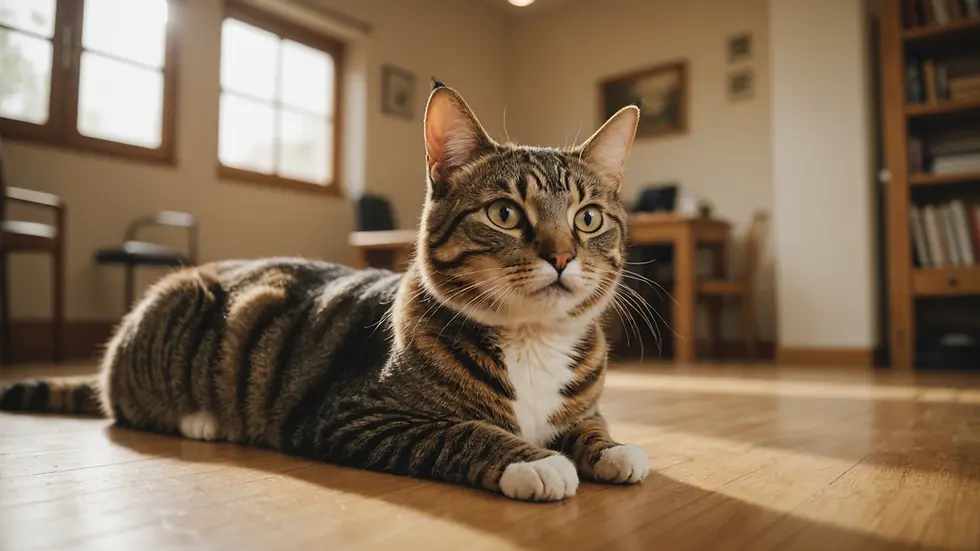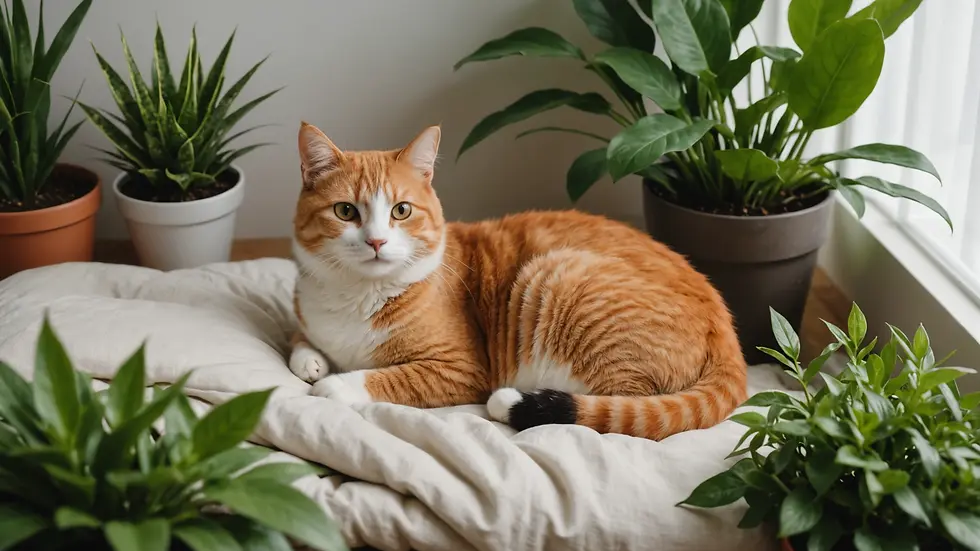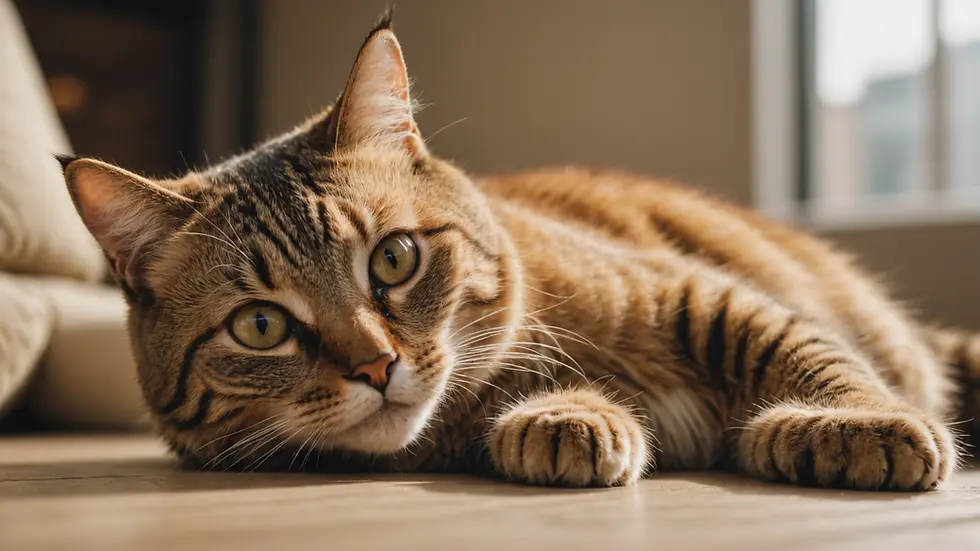Is Soundproofing the Solution for Peaceful Cat Areas?
- Jyotiraj Borah
- Feb 8
- 4 min read
Creating a peaceful environment for your feline friends can be challenging, especially in busy homes or apartments. Noise from traffic, household activities, or even playful pets can increase stress and anxiety in cats. As we strive to create a calm atmosphere for our furry companions, many wonder if soundproofing their spaces might be the answer. This article explores the benefits of soundproofing cat areas and shares practical tips to improve your home for your pets.
Understanding the Need for Soundproofing
Cats are sensitive creatures, alert to their surroundings. Sounds that we find normal, like dishes clattering or cars passing by, can feel overwhelming to them. It’s crucial to recognize that some cats might hide or show distress in response to loud noises.
Many pet owners have seen their cats behave anxiously during thunderstorms or fireworks. Creating a sound-friendly environment can effectively alleviate these stressors and help your cat feel safe and secure.
Benefits of a Soundproof Space
Reducing Anxiety: A quiet area lowers noise pollution, helping your cat feel more secure and less stressed. For example, a study found that 70% of cats showed a reduction in anxiety within a soundproof environment.
Enhanced Comfort: A calm space encourages relaxation, making your pet feel happier and healthier.
Better Behavior: Less noise often translates to fewer behavioral issues like aggression or excessive meowing. Research shows that 65% of owners noticed improved behavior in cats after soundproofing efforts.
Improved Sleep: Just as we need good sleep to function, cats need tranquility to maintain their health.
By soundproofing the areas where your cat spends the most time, you can provide a secure haven away from the chaotic world.

Identifying Noisy Areas in Your Home
The first step to soundproofing is identifying noisy spots where your cat feels vulnerable. Common sources of noise include:
Windows: Outside traffic, weather, and neighbors can create a disruptive environment.
Doors: Sound often travels through gaps, particularly in poorly insulated doors.
Flooring: Hard surfaces can amplify sounds, making footsteps and dropped items jarring.
Appliances: Noises from washing machines, dishwashers, or HVAC units can disturb your cat's calm.
After pinpointing these noisy areas, you can take steps to create a quieter environment.
Techniques for Soundproofing Cat Areas
1. Use of Soundproofing Materials
Employing specialized materials designed to absorb sound is an effective way to soundproof a space. Consider adding:
Acoustic Panels: These fabric-covered panels mounted on walls can effectively reduce noise. They come in various designs, enhancing the room's appearance while keeping sound down.
Soundproof Curtains: Heavy curtains minimize outside noise from windows. They are available in many colors and styles, allowing you to match your home decor.
Door Sweeps: Installing sweeps at the bottom of doors can help seal gaps, preventing sound from sneaking in.
2. Carpet and Rugs
Hard floors can exacerbate noise. Adding carpets or rugs in cat-frequented areas not only dampens sounds but also offers comfort. For instance, placing a rug can reduce noise levels by about 30%.
3. Create a Dedicated Space
Designate a specific area solely for your cat—like a cozy nook or a spare room filled with toys, bedding, and scratching posts. Ensure the space is well-insulated to keep outside noises at bay, providing your cat with a much-needed retreat.
4. Natural Sound Barriers
Utilizing bookshelves, cabinets, or even plants can create natural sound barriers. Positioning these items near windows or walls can absorb sound waves, contributing to a quieter environment for your cat.

5. Use White Noise Machines
While not a physical soundproofing method, white noise machines can help mask disruptive sounds. These devices produce calming background noise, assisting in blocking out sudden noises that might alarm your cat.
Monitoring Your Cat’s Reactions
After implementing soundproofing measures, it is essential to monitor your cat's behavior. Look for signs of relaxation or increased comfort. For example, if your cat starts purring, stretching, or sleeping more soundly, it’s a good indication that your changes are effective.
Regular Maintenance and Adjustments
Like any home improvement project, soundproofing requires ongoing maintenance. Regularly check your installations to ensure they are functioning well:
Inspect Panels and Curtains: Make sure they remain securely in place and are free from damage.
Replace Worn Materials: Soundproofing materials that are damaged or worn out need to be replaced promptly to remain effective.
Reassess Your Space: If new sources of noise emerge, consider changing the layout or adding more soundproofing elements.
Creating a Safe Haven
Soundproofing areas for your cats offers a practical solution for a peaceful environment. By implementing tailored materials and methods across your home, you can enhance your cats' comfort and well-being.
Remember that creating a calm oasis for your pet is an ongoing journey. As you learn more about your cat's needs and adjust your environment, you are likely to see signs of an appreciative and relaxed companion.
Investing time and effort into soundproofing your cat's environment not only provides a tranquil space but also strengthens the bond you share. Pursuing peace for your feline friends is absolutely worth the effort.





Comments